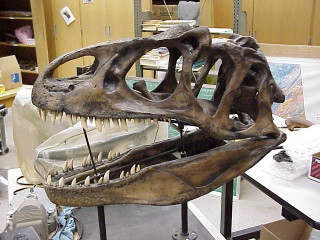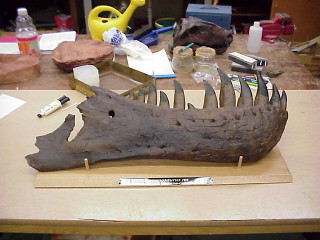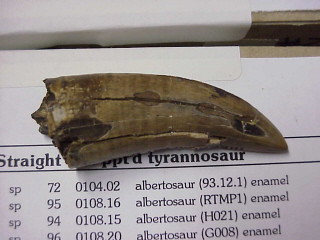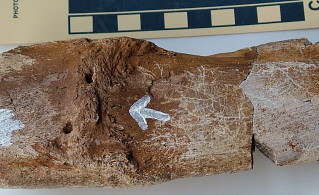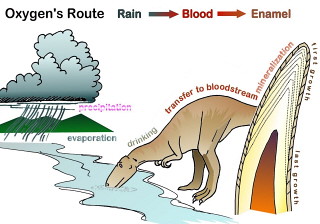Canadian fossil important new find

Tiktaalik roseae
Paleontologists have discovered fossils of a species that provides the missing evolutionary link between fish and the first animals that walked out of water onto land about 375 million years ago. The newly found species, Tiktaalik roseae, has a skull, a neck, ribs and parts of the limbs that are similar to four-legged animals known as tetrapods, as well as fish-like features such as a primitive jaw, fins and scales.
A model of a newly discovered species, Tiktaalik roseae, that fills in the evolutionary gap between fish and land animals, depicted in what scientists believe to be the animal's environment about 375 million years ago. (Model by Tyler Keillor, Photo by Beth Rooney)
These fossils, found on Ellesmere Island in Arctic Canada, are the most compelling examples yet of an animal that was at the cusp of the fish-tetrapod transition. The new find is described in two related research articles highlighted on the cover of the April 6, 2006, issue of Nature.
The full article is here.
